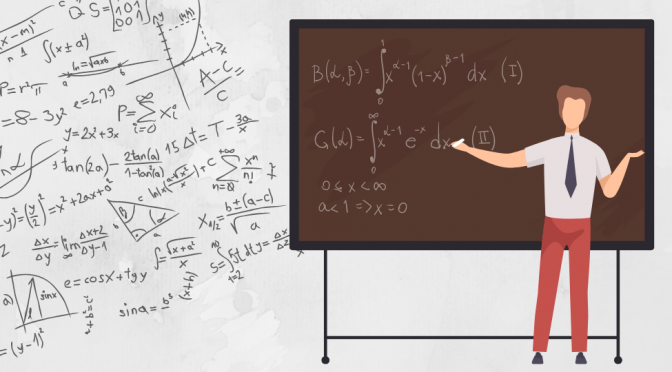Who does not want a helping hand with maths? Okay, technically it is arithmetic, as maths could also include algebra, which complicates things even more by introducing letters as a substitute for numbers. Something to leave to the likes of Einstein, quite possibly. So, to provide some assistance, without trying to get too technical, here are some tips on how to manipulate numbers to find answers quickly and to deal with the problem of not being able to make accounts balance.
To calculate 10% of a number ending in 0, you can simply lose the 0 to obtain the answer. For example, 10 percent of 100 would be 10; or 20 percent of 200 would equal 20.
Zeros are very useful in all areas of mathematics because in multiplying any number by 0, you are simply just adding a 0 to the end of it. Conversely, if dividing, you will either be losing a zero or introducing a decimal point. For example, 6 x 10 = 60, whereas 6 divided by 10 = 0.6.
The approach you take with this sum will depend on whether you are multiplying 5 by an even or an odd number.
If an even number, half the number that you are multiplying by 5, and then place a 0 to the right of it to give the answer. For example, if multiplying 5 x 6, cut 6 in half to make 3 and then place a 0 to the right of it to give the answer 30.
If an odd number, subtract 1 from the number being multiplied by 5, half that number, and make the second digit to the answer 5. For example, if multiplying 5 x 7, subtract 1 from 7 to make 6, half 6 to make 3, then have 5 as the second digit to make the answer 35.
You can, of course, just make use of the times table that is taught in schools, but smaller numbers have only been used here for simplicity’s sake. You will also want to work out greater sums beyond the 12 times table.
This works whether the number being multiplied by 9 is odd or even. All you need to do is subtract 1 from the number that is being multiplied by 9, this becomes your first digit, then subtract this answer from 9 to form your second digit.
For example, if multiplying 9 x 4:
- Subtract 1 from 4 to make 3, for your first digit.
- Subtract 3, as the above answer, from 9, to make 6, your second digit.
- Now place the two digits together to make 36, which is the answer.
The 11 Rule
This rule will work on any two-digit number that you want to multiply by 11.
Let us use, for example, 42.
The steps are:
- Separate the digits to make 4_2.
- Add the two digits 4 and 2 together to make 6.
- Place the answer 6 between the digits 4 and 2 to make 462.
So, this is your answer, 11 x 42 = 462.
Something to be aware of, though, is that if when you add the two digits together, the answer comes to greater than 9 (it was 6 in the above case), you will instead need to put the “ones” digit in the space and then carry the “tens”. For example, multiplying 11 x 48, would mean separating 4 and 8, adding 4 and 8 together to make 12, placing the 2 from 12 between the digits 4 and 8, and then adding the 1 from 12 to the 4 to make 528.
Confusing to start with, but quick and easy when you get the hang of it.
A tip to finding out quickly why your accounts might not balance is to consider that you might have entered a transaction as a deposit instead of a withdrawal. Hoping that you have only done this once, all you need to do is to look for a transaction that is equal to half your difference and that may be the offending entry.
To check for transposed numbers, those entered the wrong way around, you could divide your difference by 9. If the result that you produce from doing this is an even number, then you might have transposed a number somewhere.
I hope that you have had fun with this, rather than being put off by numbers even more. It is just a case of following the method through with an example, checking the answer on a calculator, if you need to, and next time being able to impress everyone with the speed at which you can work out such sums. Today, we rely so heavily on calculators and computers to perform our calculations for us, that perhaps it is time to fight back and make use of the mental arithmetic skills that we learned in school. Our minds will appreciate the mental workout.
